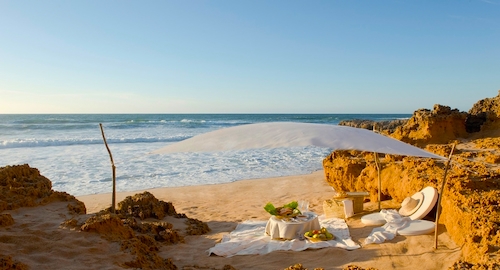Posts Tagged ‘Camel Trek in the Sahara’
How does the Ramadan fast affect tourists traveling to the Imperial Cities, the Sahara Desert and other regions of Morocco during this high holy holiday? Can tourists eat or drink in public during Ramadan? This article should clear up the confusion on this issue for tourists, to explain the most polite solutions for tourist behavior at this time, and to assure tourists that there is no problem with them visiting Morocco during Ramadan. Because the Islamic calendar is lunar, holidays such as Ramadan advance by approximately ten days with each subsequent year. This means that Ramadan makes a cycle through the entire calendar of twelve months each twenty-some years. This year, Ramadan started on August 12th, 2010 in Morocco. The fast presently starts in Morocco at approximately 4:30 AM, and ends in the evening at approximately 7:30 PM.
For anyone interested in touring Morocco’s kasbahs or ksars, I highly recommend starting with Kasbah Taourirt, the Pasha Glaoui’s former palace in Ouarzazate. Kasbah Taorirt was built by the Pasha Glaoui. Its location was strategic for trading routes and in the 1930’s when the Glaoui ruled the South was then considered one of Morocco’s largest Kasbahs. Kasbah Taourirt was one of the places Glaoui kept his slaves. As a Moroccan traveler you can explore its nooks and crannies to discover its history and often local female painters who sell their art inside as well as the many quality silver shops just steps outside the Kasbah.
Are you wondering what there is to see and do in Ad Dakhla, Morocco besides kitesurfing? Dakhla also referred to as Ad Dakhla is a fishing and surfing paradise which was once the capital of the Spanish province of Rio de Oro. Dakhla or Ad Dakhla is one of the ultimate places to go where you can witness unspoiled Sahara Desert scenery. Visiting Dakhla is ideal for Moroccan travelers who want to get away from the crowds and visit a place where it is still possible to see the authentic nomad lifestyle nearby. Another place in Morocco where it is possible to see the authentic Nomad lifestyle is in the Bouthgrar region near Mount Mgoun which is often referred to as the Valley of Nomads. The Valley of Nomads can be visited from en route from Ouarzazate when passing the Valley of Roses.
Adopt a Moroccan schedule To Beat the Heat in Morocco During Summer & Other Seasons. Take advantage of the cool early morning hours in Morocco in Summer by taking a mid-moring snack and a late lunch about 1:00 PM. Take a nap in your air-conditioned hotel room or traditional Moroccan Riad, or a dip in the pool. Around 4 PM, have a snack, and head out again around 4:30-5:00 PM. You won’t miss much, because Moroccans tend to lie low during this same time. Enjoy yourself until dark, then head off for dinner around 8-9:00 PM. Take advantage of the Moroccan night life during the cool evening hours if you’re staying in Imperial cities such as Marrakech, Essaouira or Casablanca, all which boast varied restaurants with Moroccan and International cuisine along with entertainment.
May 27th, 2010
Moroccan Arts & Entertainment,
Moroccan Festivals & Holidays,
Moroccan Food & Drink,
Moroccan Shopping,
Morocco Accommodations & Lodging,
Morocco City Guides,
Morocco for Solo Travelers / Families / Couples,
Morocco Holiday Activities,
Morocco Natural Wonders,
Morocco Style & Design,
Morocco Travel Tips,
Morocco Vacations & Tours
Step into the world of the Arabian Nights with New Line Cinema’s Sex in the City 2, a fabulous wish-fulfillment movie for women, filmed in Morocco, and opening in theaters on May 28, 2010. Indeed Sex in the City has left New York for majestic Morocco. Spectacular photographs from its North African set will leave an impression on viewers of this sequel film. Filmed in the Souks of Marrakech, actresses Sarah Jessica Parker and Cynthia Nixon were spotted pounding their heals through Marrakesh’s Djemaa El Fna Square, according to the UK Daily Mail Online.
A Honeymoon is the most special and trips of a life time that requires love, luxury and planning. At Morocco Travel we can guide help you create a customized Luxury Honeymoon in Morocco that will leave you with a lifelong memory. A Luxury Honeymoon in Morocco will allow you to relax completely while exploring ancient Roman Ruins, visit Imperial Cities, take a Romantic Trek in the Sahara Desert’s Sand Dunes and then be whisked off to a quiet and tranquil Moroccan Hotel that boasts lush green gardens, marble fountains and exotic trees and flowers. A private Morocco Honeymoon is a luxury worth including in your wedding budget and planning. Morocco as a Luxury Honeymoon Destination will be the dream vacation of a lifetime.







